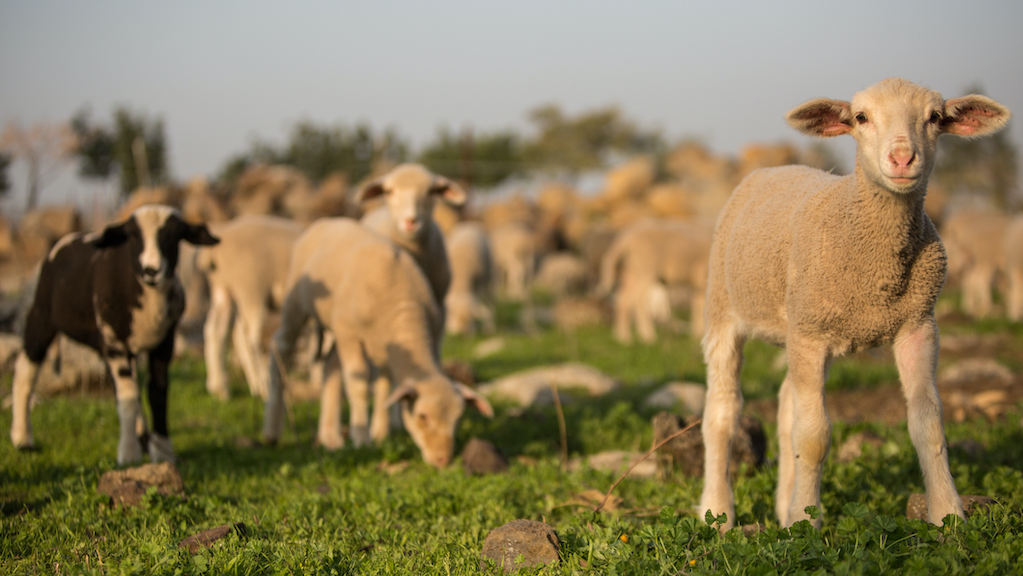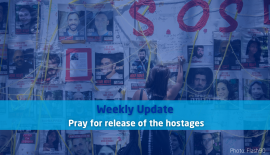The Passover Lamb
It plays an important role in the story of the exodus and is one of the first commandments given to Israel in the Bible. Yet the Passover lamb has not been served at the Jewish Seder table for 1950 years because there is no longer a temple where it can be sacrificed.
In Exodus 12, various regulations are given concerning the Paschal lamb. On the tenth day of the month, designated as the ‘head of the months’ (so it says in Hebrew, Exodus 12:2), each family of ‘all the community of Israel’ is to take a lamb. It is remarkable that the Bible uses the word community for Israel here for the first time. With this command, Israel is forged into a community under God’s commandments. One lamb per family, and if it is too much for a household, then two families.
As with all sacrifices, it must be a lamb without any defect. It must be a male one-year-old, and it may be either a goat or a sheep. The Israelites must then keep it in the house for four days. This means that the lamb must be examined carefully for defects that would make it unsuitable for the sacrifice. One explanation says that in the (later) sacrificial service, it was the general rule that a sacrificial animal was carefully examined for defects four days beforehand. This could also be done by the one who sold the sacrificial animal. But only in the case of the Paschal Lamb, the sacrificer must do this himself. By the way, the Jewish interpretation notes that the period of four days only applied to the first time in Egypt. Later it no longer had to be observed. At the end of Exodus 12, instructions are given for later celebrations.
Why a lamb of a goat or a sheep? The midrash, the classic rabbinic Bible explanation, explains that this symbolises the Egyptian deities. Israel had to renounce the Egyptian gods. With the lamb, they slaughtered the gods of Egypt and turned to the God of Israel.
In Jewish tradition, it is told as one of the Passover miracles: the Egyptians were, of course, furious when they heard that the Israelites were taking lambs (their gods) into their homes and tying them to the table leg, so to speak, in order to slaughter them. But they were not able to do anything against it because God protected Israel. The Paschal Lamb thus stands not only for the transition from slavery to freedom but also for the spiritual transformation from cultural and religious bondage to the service of the true God.
With the lamb, they slaughtered the gods of Egypt and turned to the God of Israel.
With the blood of the slaughtered lamb, the Israelites had to sprinkle the doorposts. “And the blood shall be for you a sign” – for you, it says with some emphasis. It is a sign that the Israelites have renounced Egyptian idols and have become visibly obedient to God’s commandment, even if their lives are in danger. But the Lord sees Israel’s obedience and passes over their houses. That is the meaning of the word Pesach: to pass over or skip over. The destroyer (verse 23) has no chance.
The Paschal Lamb had to be slaughtered “between the two evenings”, so the Hebrew literally says. That was understood as after noon when the sun is over its highest point and before sunset. It was then to be roasted whole on the fire. Not one leg of it was to be broken. It was only meant for Israel. Those who were not circumcised were not allowed to participate. This continued to be the case later on. According to Jewish tradition, many Israelites in Egypt, therefore, had still to be circumcised. That is also why a period of four days was observed.
The Paschal Lamb is thus not a sacrifice for sin. There is sometimes confusion about this. In the sanctuary (first the tabernacle, later the temple), there were daily sacrifices for sin, including lambs. And a lamb was sacrificed daily both in the morning and in the afternoon as a symbol of devotion and meeting with God. But that must be distinguished from the Paschal Lamb.
Jesus died at the hour of the daily sacrifice in the temple.
It was the afternoon of 14 Nissan, the time that the Passover lambs, too, were slaughtered. He died as a blameless sacrifice. None of His bones were broken (John 19:36).
The apostle Paul writes: “For Christ, our Passover also has been sacrificed” (1 Corinthians 5:7). It is in the context of a call to the believers in Corinth to purify their lives from sin, fornication, and idolatry.
Jesus died at the hour of the daily sacrifice in the temple. It was the afternoon of 14 Nissan, the time that the Passover lambs, too, were slaughtered. He died as a blameless sacrifice. None of His bones were broken (John 19:36). According to John’s Gospel, Jesus died for the nation, and not for the nation only, but in order that He might also gather together into one the children of God who are scattered abroad (John 11:51-52). In other words, to bring back the exiles of Israel.
This year, 14 Nissan, the eve of Passover, coincides with Good Friday. Let us remember that Jesus’ death is not just for our personal salvation, but first and foremost for the restoration of all Israel.






